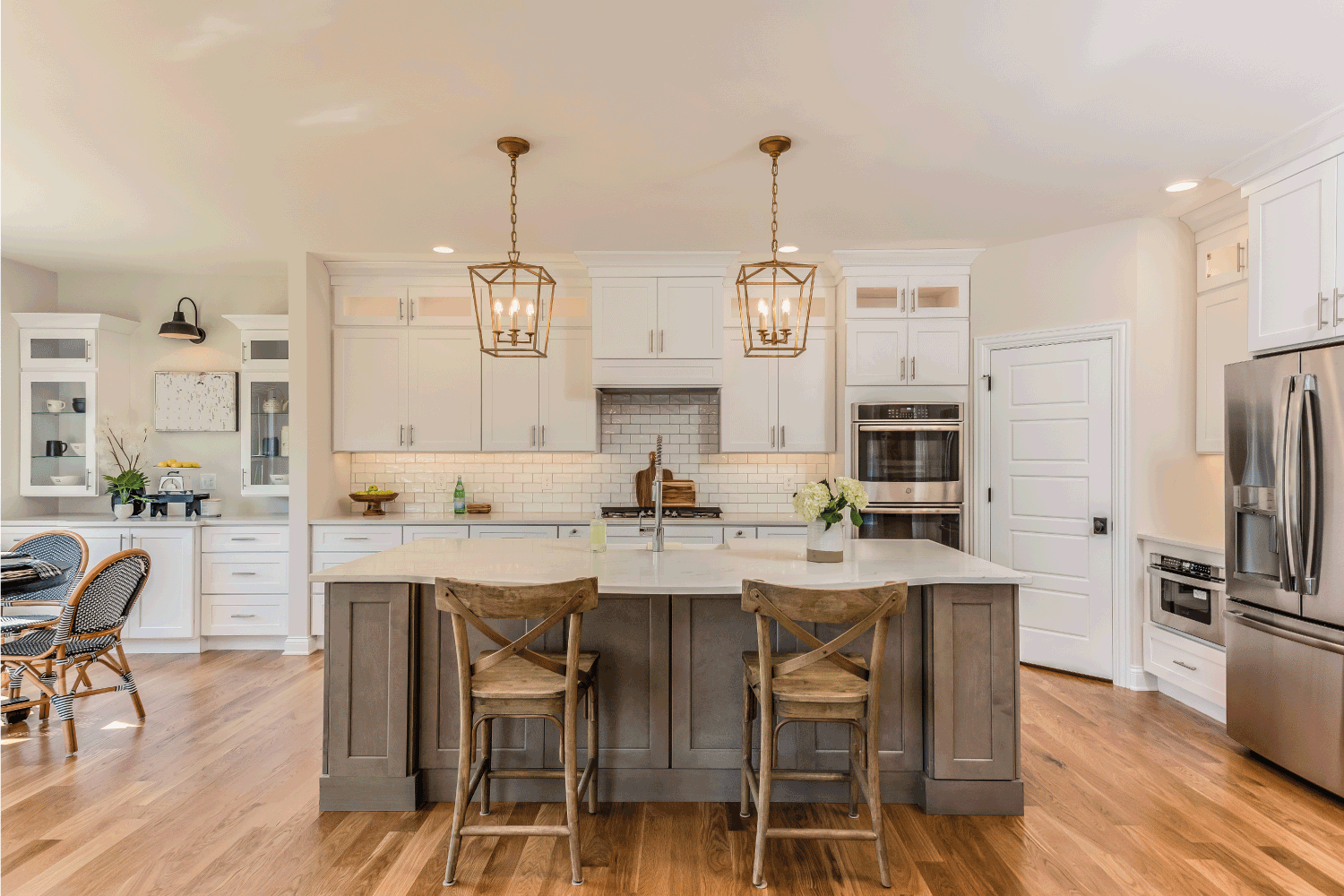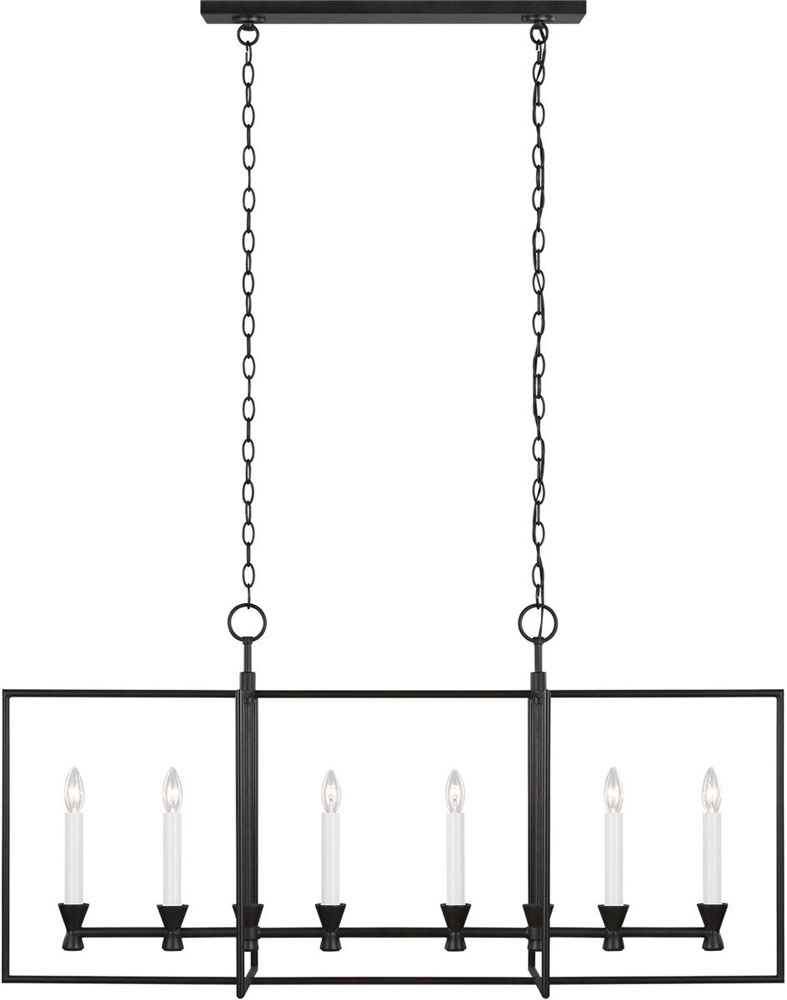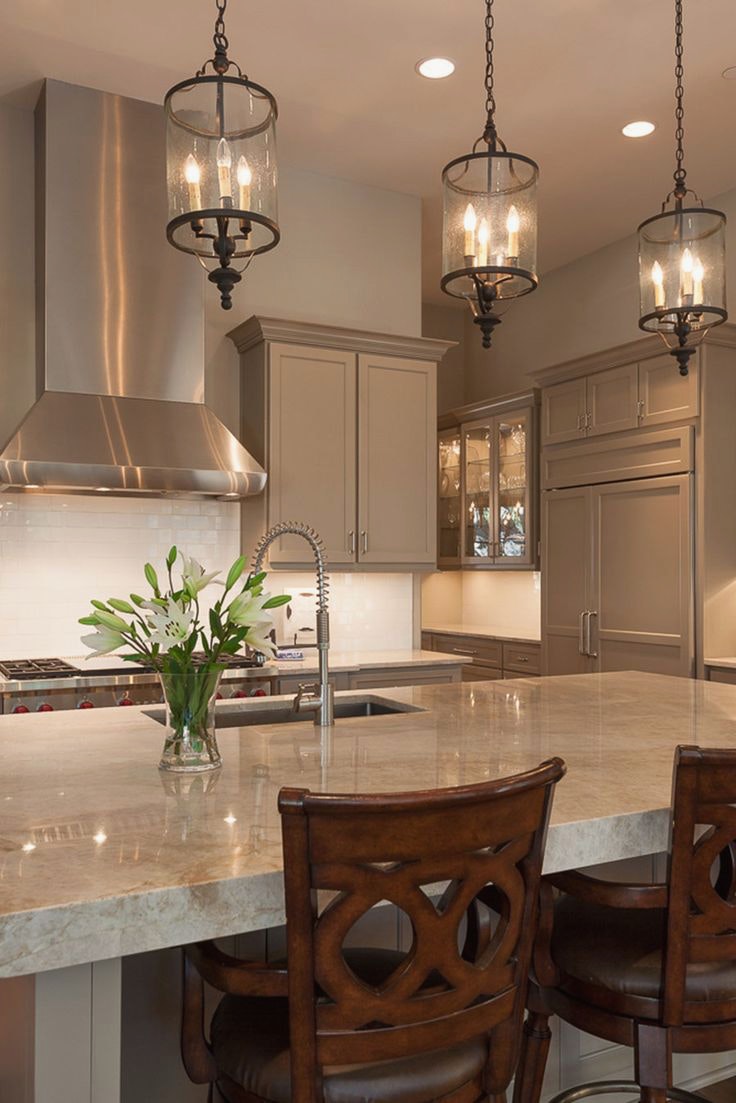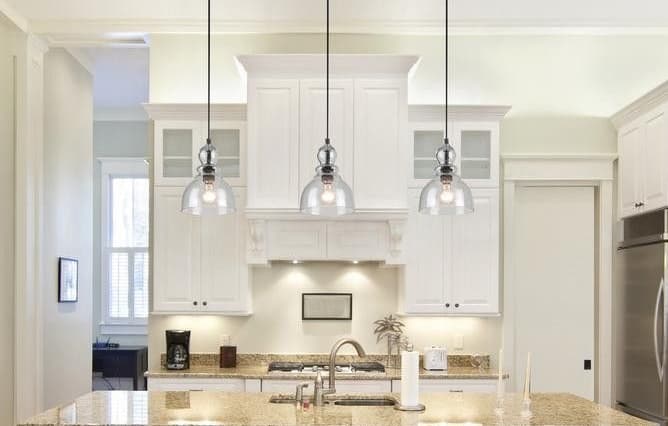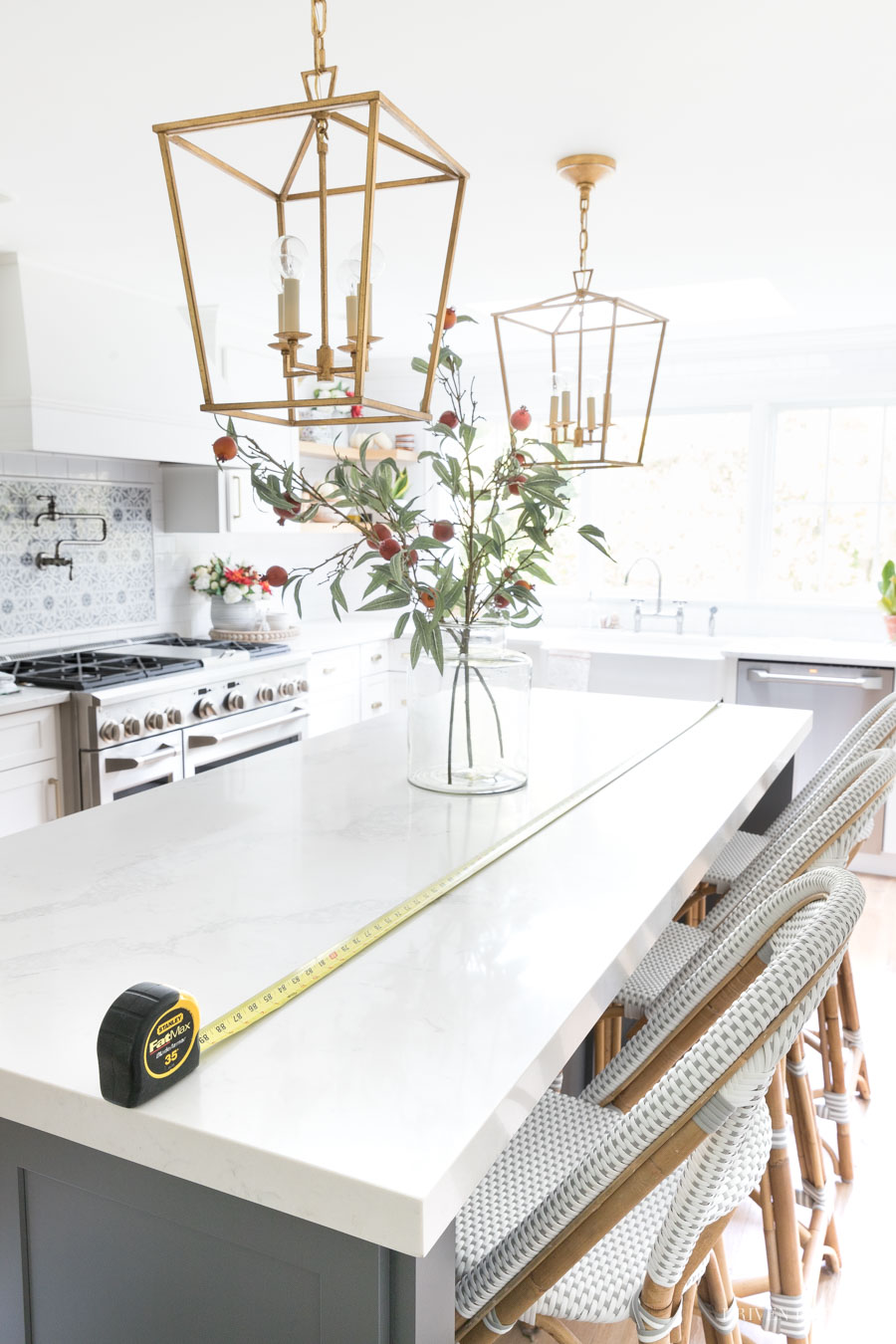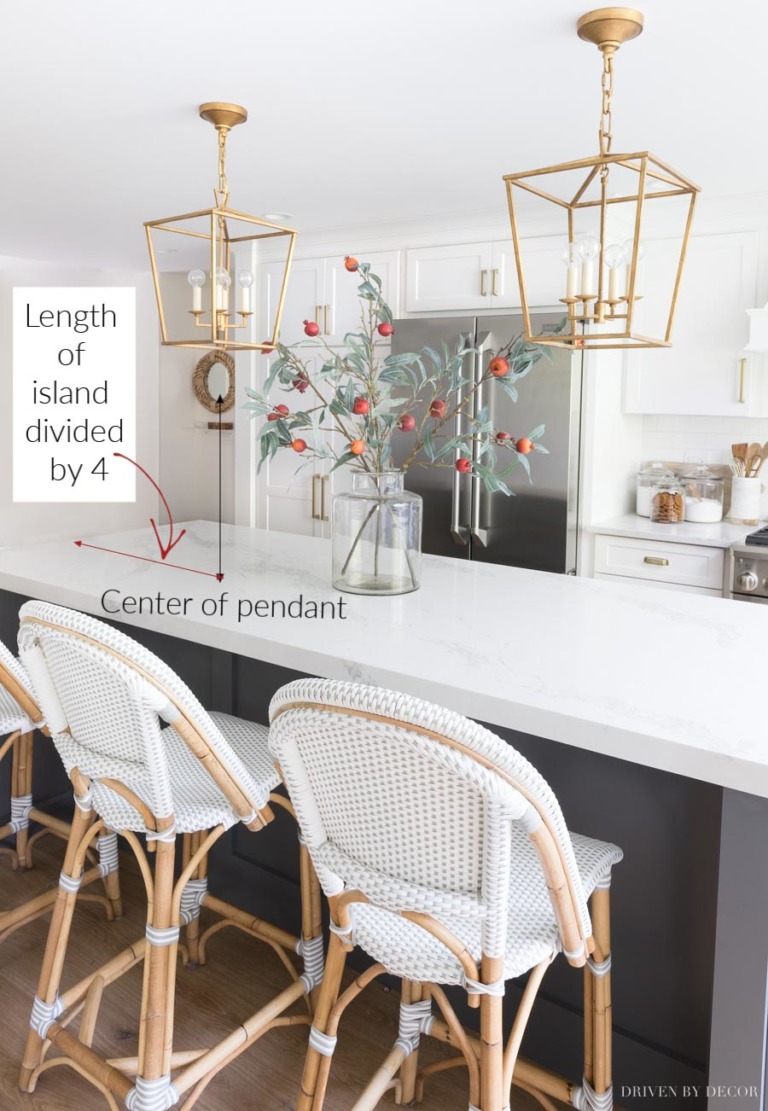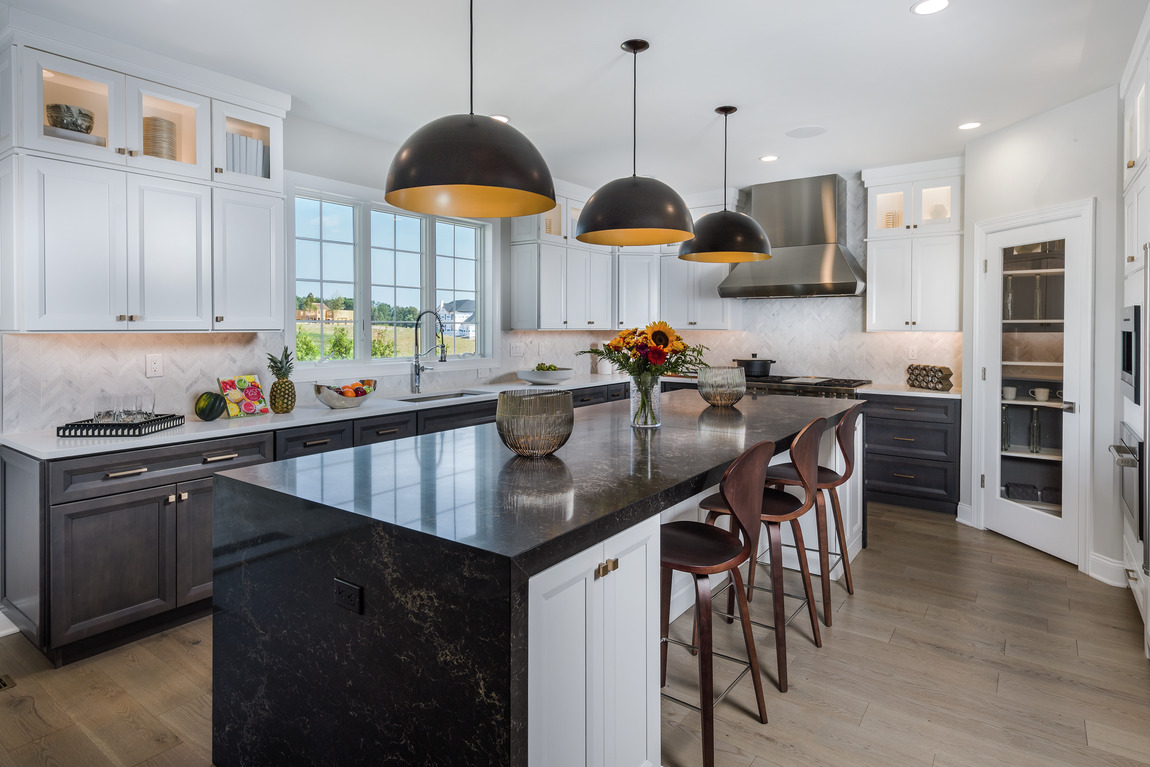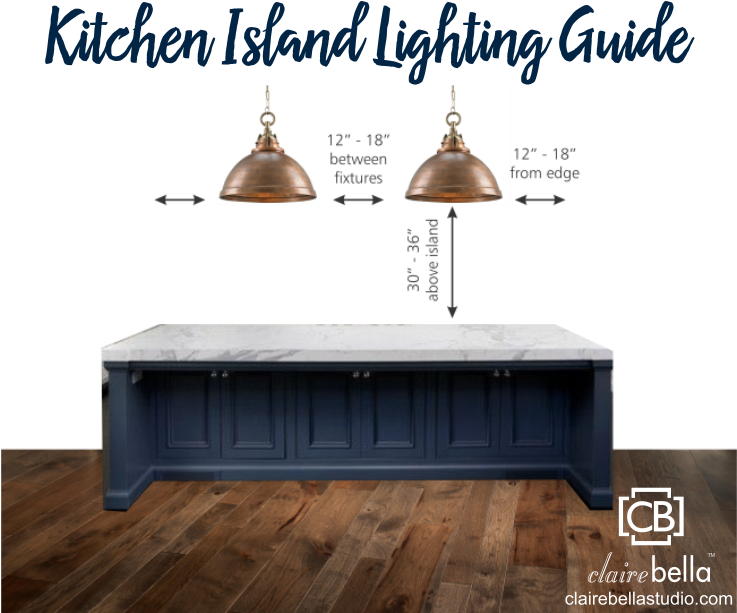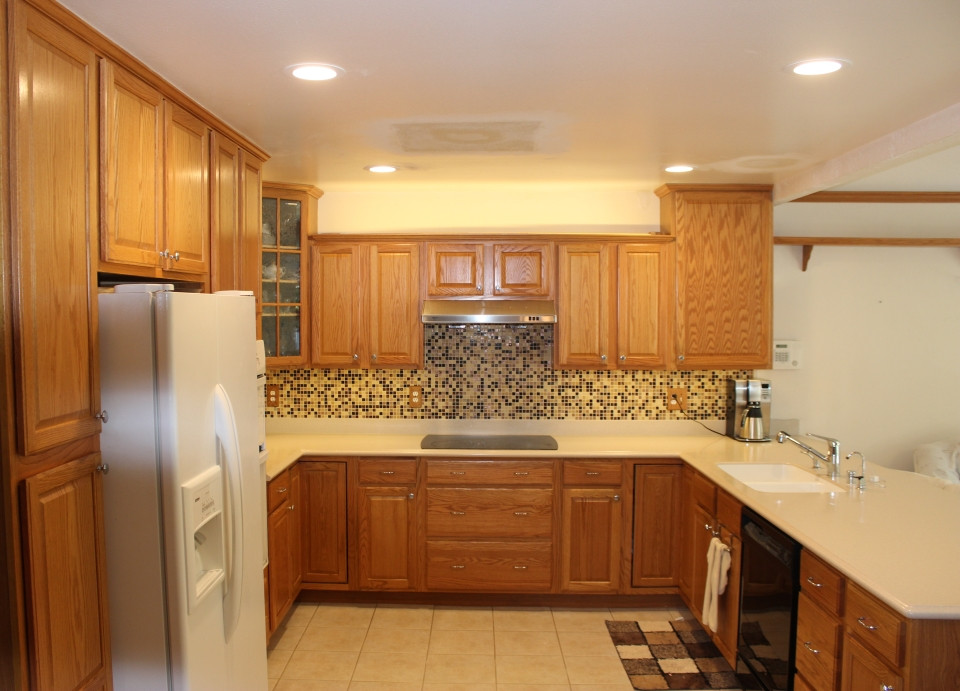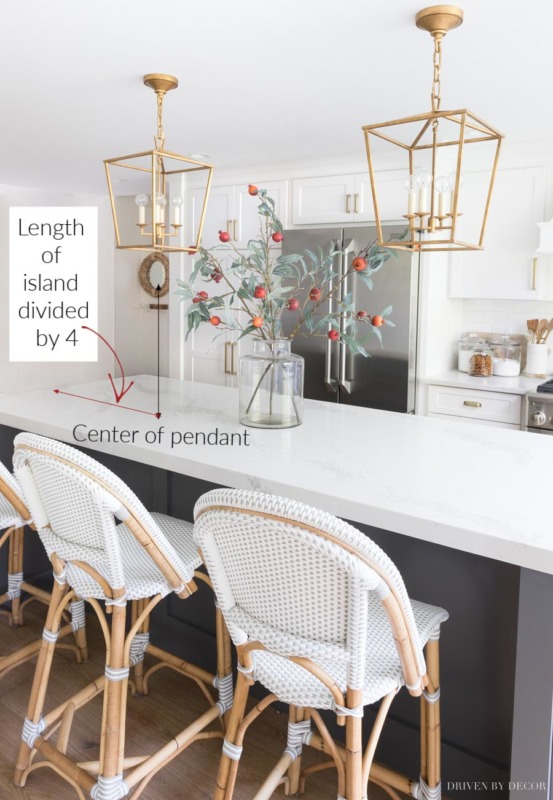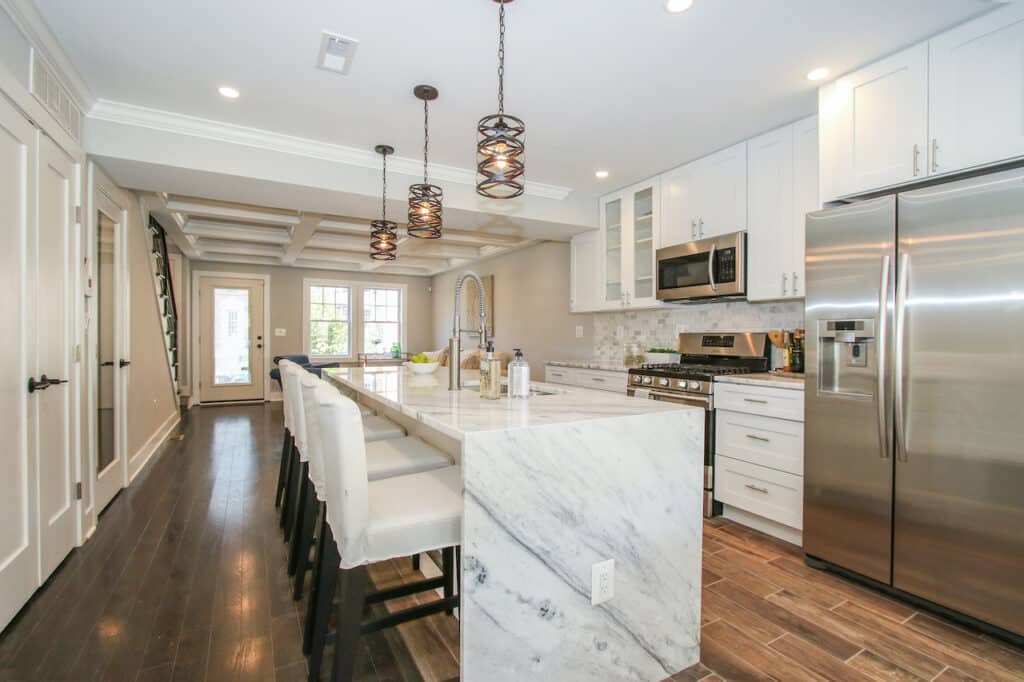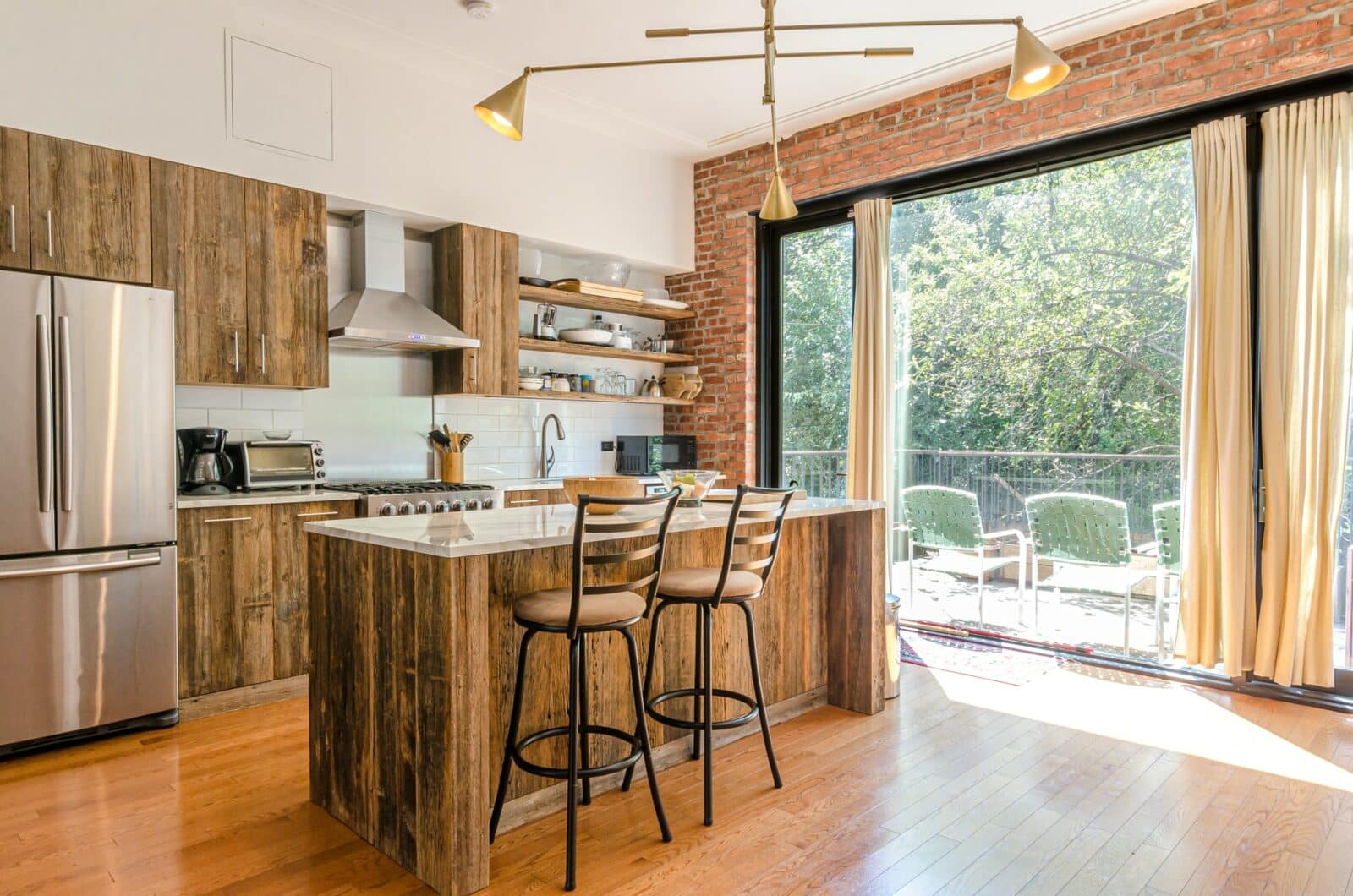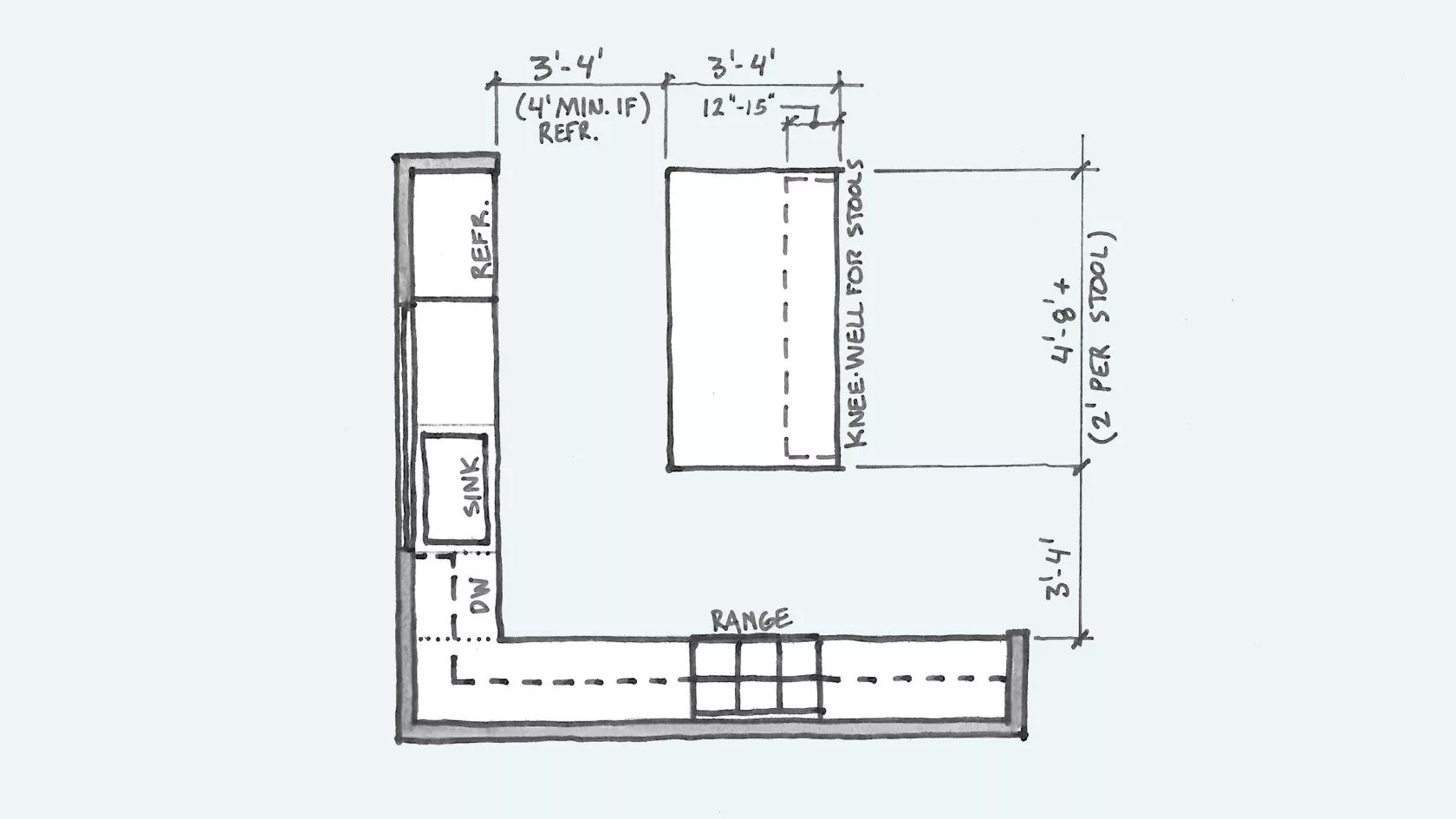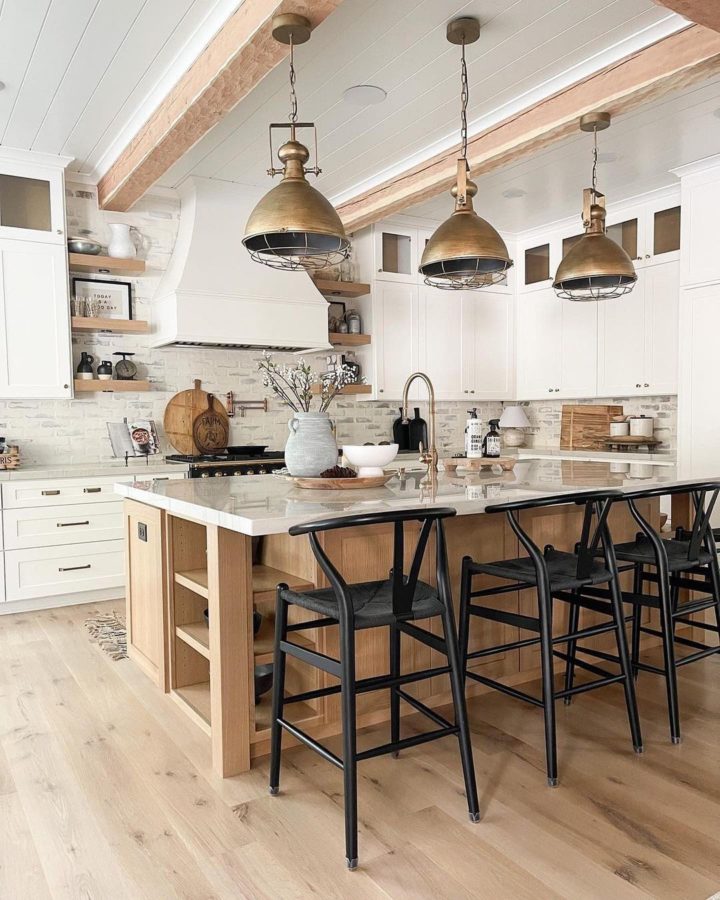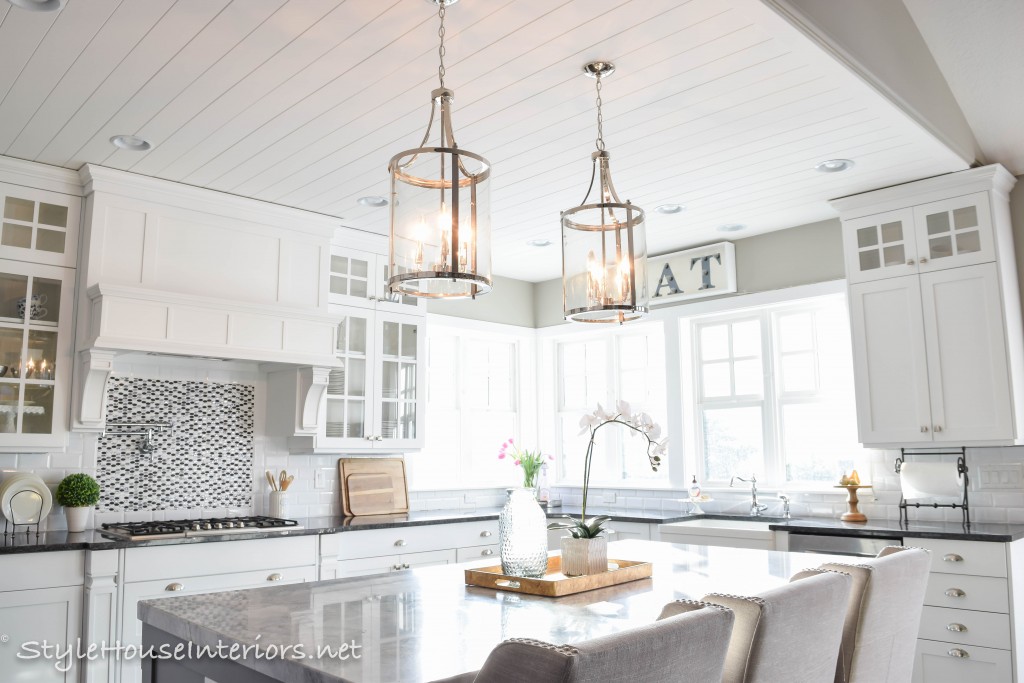Kitchen island lighting can make a big impact on the overall look and functionality of your kitchen. It not only provides essential task lighting for cooking and preparing food, but it also adds a touch of style and ambiance to the space. When it comes to choosing the right kitchen island lighting, one important factor to consider is the spacing. Proper spacing can make all the difference in achieving a polished and balanced look for your kitchen island. Here are some tips for properly spacing your kitchen island lighting.How to Properly Space Kitchen Island Lighting
The ideal spacing for kitchen island lighting will depend on the size and shape of your island, as well as the type of lighting you choose. As a general rule, pendant lights should be spaced about 30-32 inches apart, while larger chandeliers or linear fixtures can be spaced up to 36 inches apart. This spacing allows for even distribution of light and prevents the fixtures from overpowering the space.The Ideal Spacing for Kitchen Island Lighting
When deciding on the spacing for your kitchen island lighting, it's important to take into consideration the size and shape of your island, as well as the height of your ceiling. A good rule of thumb is to have the bottom of the light fixture hang about 30-36 inches above the island's surface. If you have a larger island, you may want to opt for multiple smaller fixtures rather than one large one for a more balanced look.Tips for Choosing the Right Spacing for Kitchen Island Lighting
In addition to providing adequate lighting, kitchen island lighting can also help maximize the space in your kitchen. By choosing the right spacing for your fixtures, you can create a more open and spacious feel. For example, if you have a small kitchen, spacing your pendant lights closer together can create the illusion of a larger space. On the other hand, if you have a large kitchen with a large island, spacing your fixtures further apart can help fill the space and prevent it from feeling empty.Maximizing Light and Space with Kitchen Island Lighting
Proper spacing is key to achieving a balanced look with your kitchen island lighting. If the fixtures are too close together, it can look cluttered and overwhelming. If they are too far apart, it can feel disjointed and unbalanced. Take the time to carefully measure and plan the spacing of your fixtures to create a cohesive and aesthetically pleasing design.Creating a Balanced Look with Kitchen Island Lighting Spacing
Aside from the visual impact, proper spacing for kitchen island lighting also has functional benefits. It allows for adequate lighting coverage for tasks such as food preparation and cooking. It also helps prevent shadows and glare, making for a more comfortable and inviting space.The Importance of Proper Spacing for Kitchen Island Lighting
To calculate the perfect spacing for your kitchen island lighting, there are a few things to consider. First, measure the length and width of your island. Then, divide the length by the number of fixtures you want to install. This will give you the approximate spacing between each fixture. You can also use the rule of thumb mentioned earlier, which is to have the bottom of the light fixture hang about 30-36 inches above the island's surface.Calculating the Perfect Spacing for Kitchen Island Lighting
When it comes to spacing kitchen island lighting, there are a few common mistakes to avoid. One is not taking into consideration the size and shape of your island. Another is not considering the overall design and layout of your kitchen. It's important to keep in mind the overall proportions and balance of the space when determining the spacing for your fixtures.Common Mistakes to Avoid When Spacing Kitchen Island Lighting
When designing your kitchen island lighting layout, it's important to keep spacing in mind from the beginning. This will ensure that the fixtures are properly placed and that there is enough space for them to be installed without any issues. It's also helpful to get the opinion of a professional designer or electrician to ensure that the spacing is appropriate for your specific kitchen layout.Designing Your Kitchen Island Lighting Layout with Spacing in Mind
To achieve the best kitchen island lighting spacing, consider the following tips from experts: 1. Consider the size and shape of your island: This will help determine the number and size of fixtures needed, as well as the spacing between them. 2. Take into account the height of your ceiling: The taller your ceiling, the more space you have to work with when it comes to spacing your fixtures. 3. Don't be afraid to mix and match: Combining different types of fixtures, such as pendants and chandeliers, can add interest and dimension to your kitchen island lighting. 4. Use dimmer switches: Dimmer switches allow you to adjust the brightness of your fixtures, making it easy to create the perfect ambiance for any occasion. 5. Consider the overall design of your kitchen: The spacing of your kitchen island lighting should complement the overall design and layout of your kitchen for a cohesive look. In conclusion, proper spacing is crucial when it comes to kitchen island lighting. It not only ensures adequate lighting for tasks, but it also plays a big role in the overall design and functionality of your kitchen. By following these tips and taking the time to plan and measure properly, you can achieve the perfect spacing for your kitchen island lighting and create a beautiful and functional space.Expert Tips for Achieving the Best Kitchen Island Lighting Spacing
The Importance of Proper Kitchen Island Lighting Spacing in House Design

The Kitchen Island: A Versatile and Functional Addition to Any House
 The kitchen island has become a staple feature in modern house design. Not only does it provide additional storage and counter space, but it also serves as a gathering place for family and friends. With its versatility and functionality, it's no wonder that homeowners are increasingly opting for a kitchen island in their homes.
The kitchen island has become a staple feature in modern house design. Not only does it provide additional storage and counter space, but it also serves as a gathering place for family and friends. With its versatility and functionality, it's no wonder that homeowners are increasingly opting for a kitchen island in their homes.
The Role of Lighting in House Design
 Lighting plays a crucial role in house design, and the kitchen is no exception. Proper lighting can enhance the overall aesthetic and functionality of a kitchen, making it a more inviting and efficient space. When it comes to kitchen island lighting, the right spacing is essential to achieve the desired effect.
Lighting plays a crucial role in house design, and the kitchen is no exception. Proper lighting can enhance the overall aesthetic and functionality of a kitchen, making it a more inviting and efficient space. When it comes to kitchen island lighting, the right spacing is essential to achieve the desired effect.
The Basics of Kitchen Island Lighting Spacing
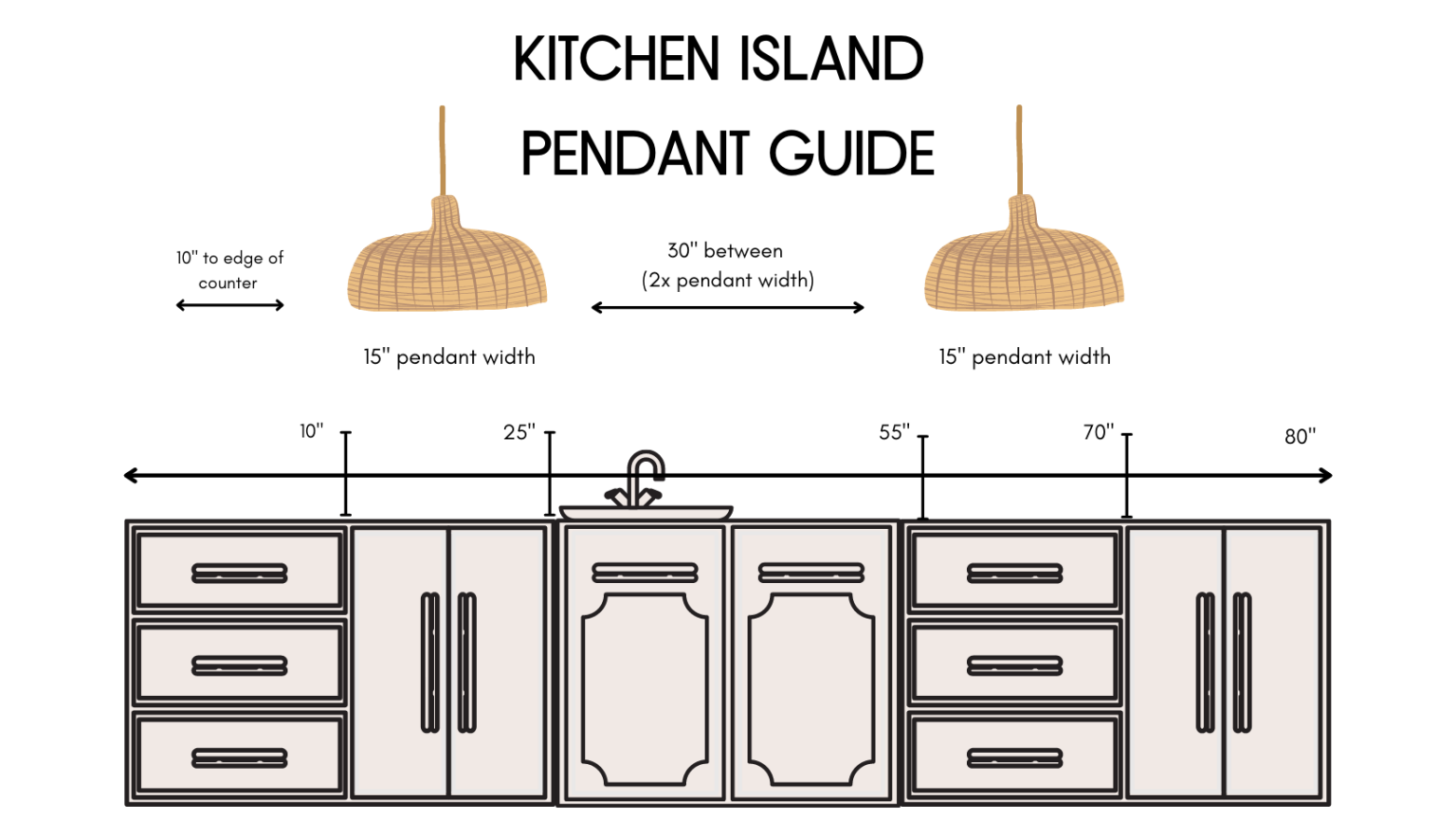 When designing the lighting for a kitchen island, there are a few essential factors to consider, such as the size and shape of the island, the height of the ceiling, and the overall layout of the kitchen. However, the most crucial aspect is the
spacing
of the lights.
Properly spaced lighting
can make a significant impact on the overall look and feel of a kitchen island. Too many lights too close together can create a cluttered and overwhelming look, while too few lights can leave the kitchen feeling dark and uninviting. Striking the right balance is crucial.
When designing the lighting for a kitchen island, there are a few essential factors to consider, such as the size and shape of the island, the height of the ceiling, and the overall layout of the kitchen. However, the most crucial aspect is the
spacing
of the lights.
Properly spaced lighting
can make a significant impact on the overall look and feel of a kitchen island. Too many lights too close together can create a cluttered and overwhelming look, while too few lights can leave the kitchen feeling dark and uninviting. Striking the right balance is crucial.
The Golden Rule of Kitchen Island Lighting Spacing
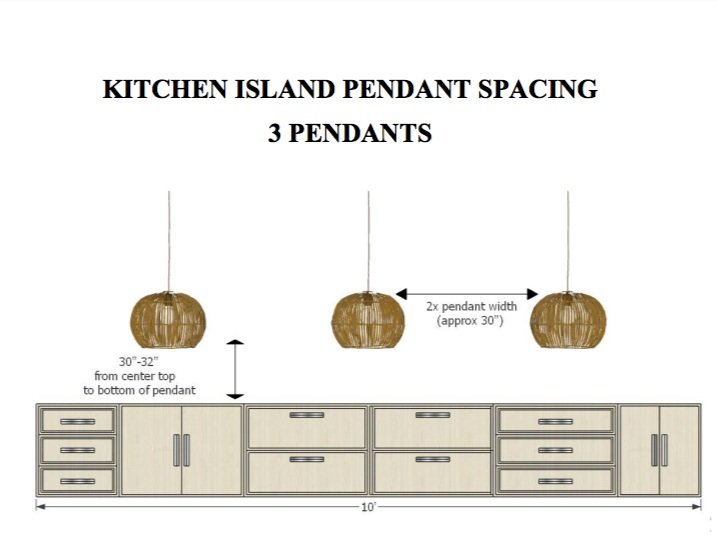 So, what is the
golden rule
of kitchen island lighting spacing? It is recommended to have one light for every two feet of counter space. For example, if your kitchen island is six feet long, you should have three lights evenly spaced above it. This ratio ensures that there is enough light to illuminate the entire space without overwhelming it.
So, what is the
golden rule
of kitchen island lighting spacing? It is recommended to have one light for every two feet of counter space. For example, if your kitchen island is six feet long, you should have three lights evenly spaced above it. This ratio ensures that there is enough light to illuminate the entire space without overwhelming it.
Other Considerations for Kitchen Island Lighting
 Aside from the number of lights and their spacing, there are a few other essential considerations when it comes to kitchen island lighting. These include the type of lighting, the color temperature, and the positioning of the lights.
Pendant lights
are a popular choice for kitchen islands as they provide both ambient and task lighting. They also come in a variety of styles and designs, making it easy to find one that complements the overall aesthetic of your kitchen.
When it comes to color temperature,
cool white
or
daylight
bulbs are recommended for task lighting, while
warm white
bulbs are ideal for creating a cozy and inviting atmosphere.
Lastly, the positioning of the lights should be carefully considered to avoid casting shadows on the work surface. Lights should be placed in front of or to the sides of the island, rather than directly above it.
Aside from the number of lights and their spacing, there are a few other essential considerations when it comes to kitchen island lighting. These include the type of lighting, the color temperature, and the positioning of the lights.
Pendant lights
are a popular choice for kitchen islands as they provide both ambient and task lighting. They also come in a variety of styles and designs, making it easy to find one that complements the overall aesthetic of your kitchen.
When it comes to color temperature,
cool white
or
daylight
bulbs are recommended for task lighting, while
warm white
bulbs are ideal for creating a cozy and inviting atmosphere.
Lastly, the positioning of the lights should be carefully considered to avoid casting shadows on the work surface. Lights should be placed in front of or to the sides of the island, rather than directly above it.
In Conclusion
 In summary, proper kitchen island lighting spacing is crucial in achieving a well-designed and functional kitchen. It is essential to strike a balance between having enough lights to illuminate the space without overwhelming it. By following the
golden rule
of one light for every two feet of counter space, considering the type and color temperature of the lights, and carefully positioning them, you can create a beautiful and inviting kitchen island that will be the heart of your home.
In summary, proper kitchen island lighting spacing is crucial in achieving a well-designed and functional kitchen. It is essential to strike a balance between having enough lights to illuminate the space without overwhelming it. By following the
golden rule
of one light for every two feet of counter space, considering the type and color temperature of the lights, and carefully positioning them, you can create a beautiful and inviting kitchen island that will be the heart of your home.




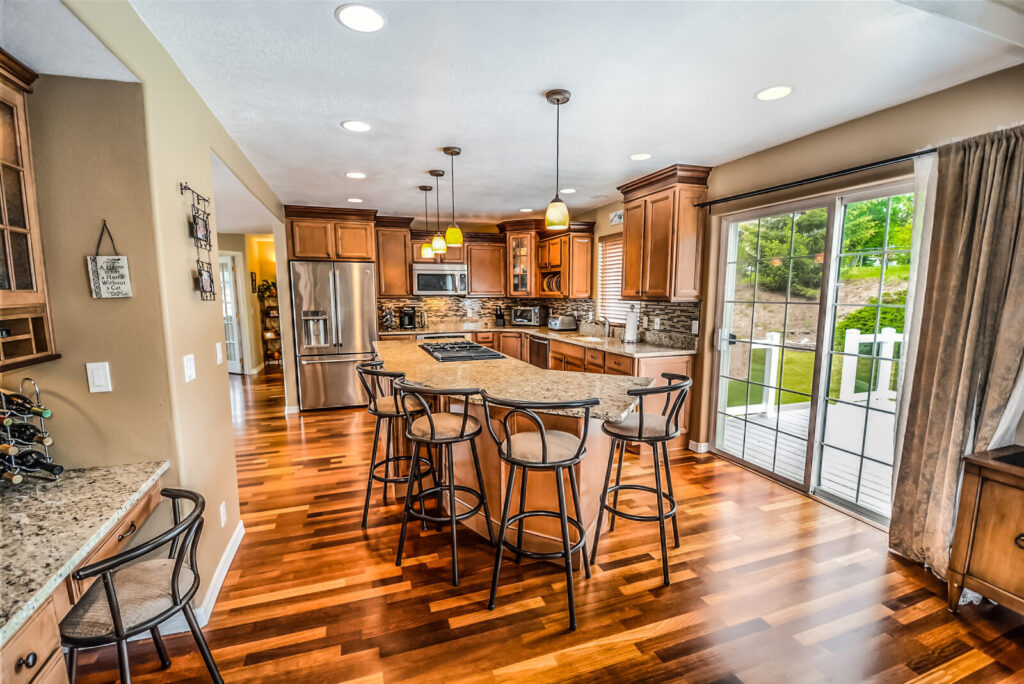
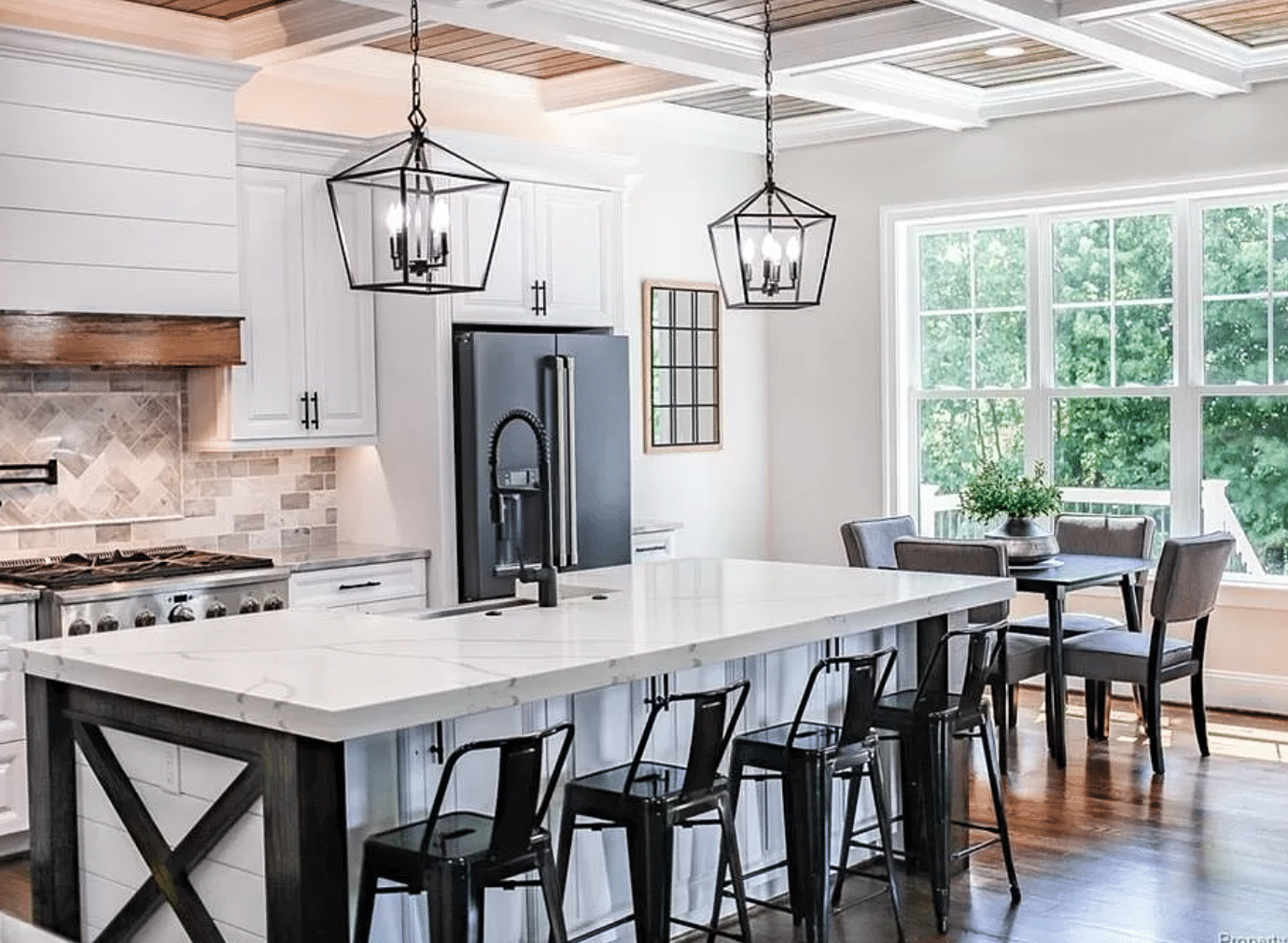
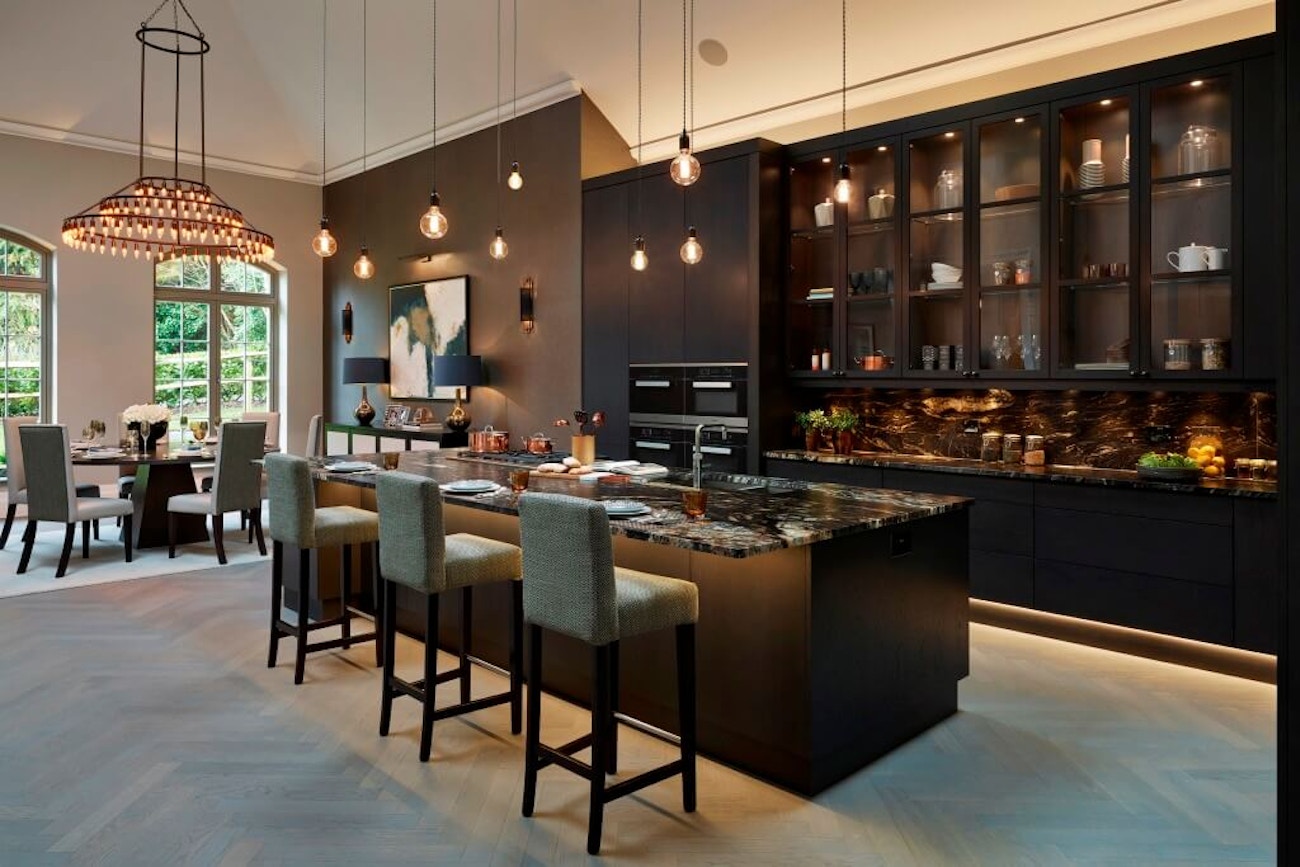
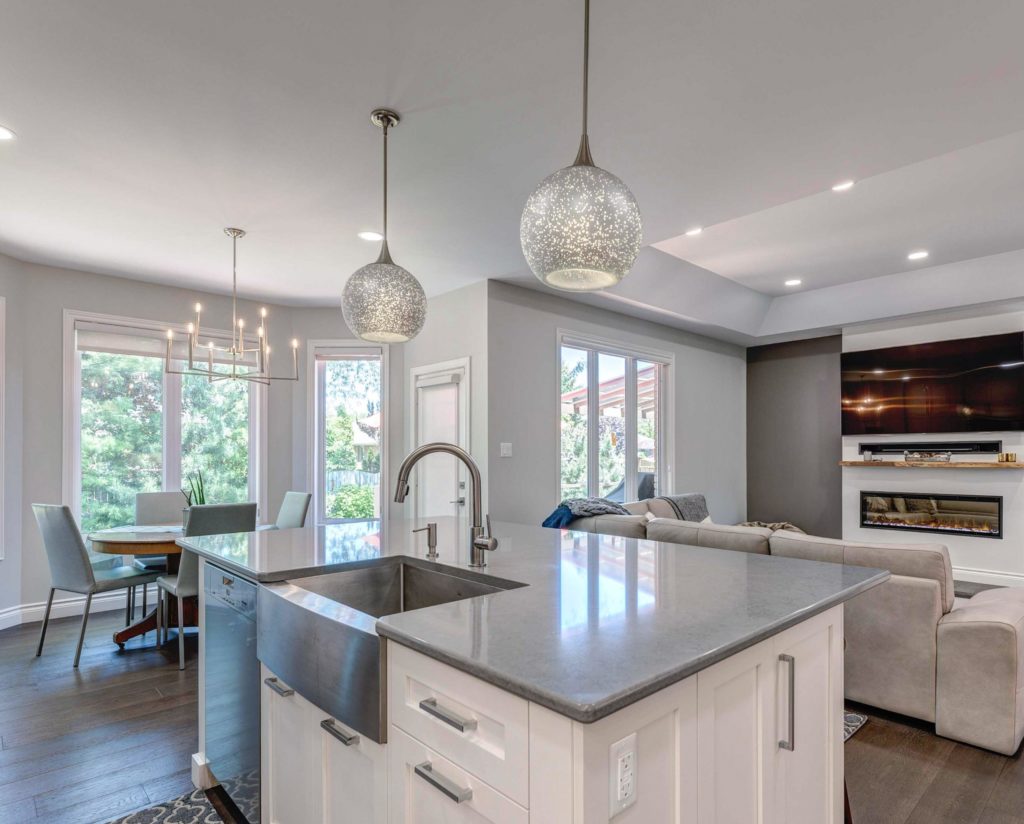


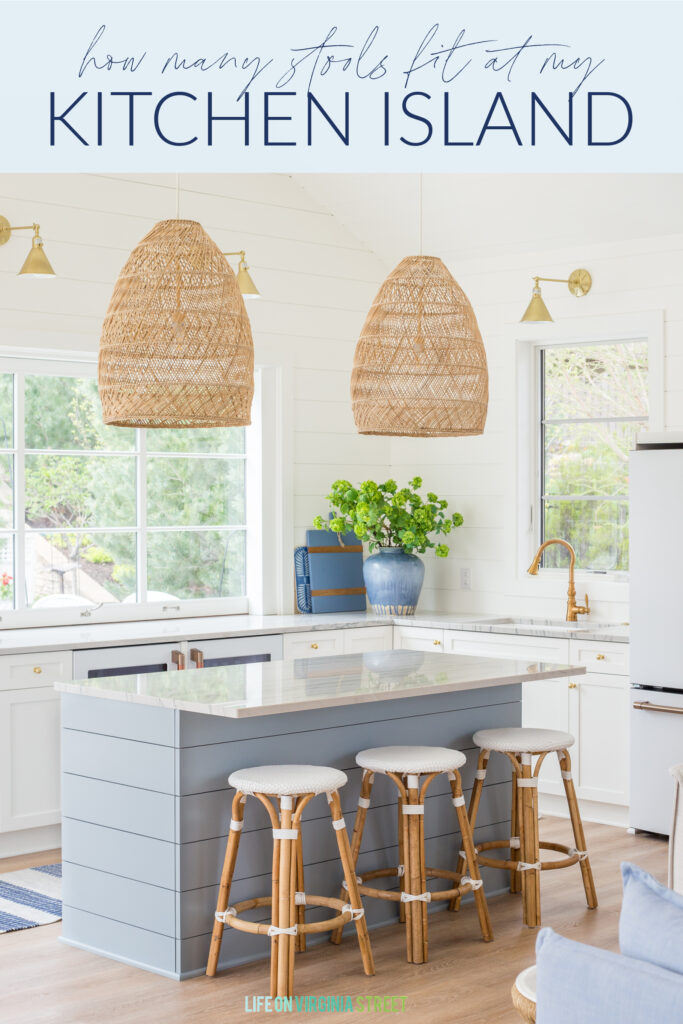


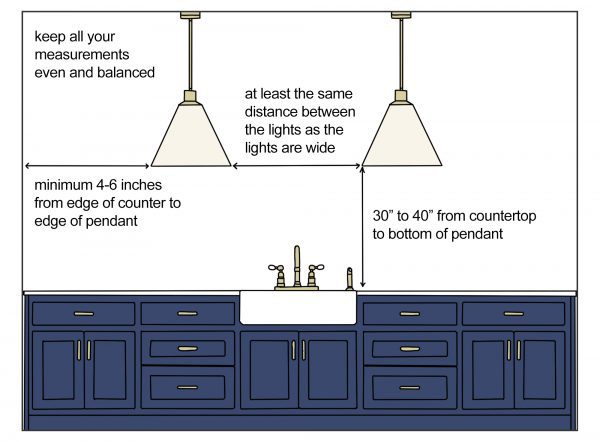

:max_bytes(150000):strip_icc()/distanceinkitchworkareasilllu_color8-216dc0ce5b484e35a3641fcca29c9a77.jpg)
